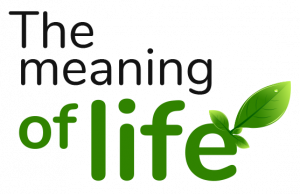7 Simple Ways To Treat Body Pain At Old Age Without Taking Drugs

The older we get, the more it feels like our bodies are falling apart. Aches, pains, and stiffness mainly result from daily wear and tear and the natural loss of muscles and bones. While we can’t necessarily completely stop the symptoms that come with aging, we can certainly minimize their overall impact.
1. Drink more water.
As we age, we actually dehydrate much faster because our cells don’t store water the way they used to. Drinking water regularly and in adequate amounts can help alleviate the pain associated with dehydration.
2. Consume a bone- and muscle-friendly diet.
Foods rich in calcium, magnesium, potassium, iron, and omega-3 fatty acids – such as dairy products, fish, leafy greens, potatoes, oranges, bananas, and more – are building blocks for our bones and muscles. That foods considered “superfoods,” which are rich in antioxidants, can decrease inflammation, thus relieving aches and pains.
3. Exercise
Don’t avoid moving because of your aches and pains. A daily exercise routine can help them go away!
Exercise keeps our bones strong, muscles toned, and allows us to function at a much higher level for a longer period of time – well into our 70s and 80s.
If you suffer from osteoarthritis in, say, your knee, there are still exercises you can do to strengthen the muscles around your knee, such as riding a bicycle. The more strength your body has to support itself, the less pain you will have to experience.
4. Soothe in the heat
A hot shower or bath, a hot water bottle, or a warm cloth can help relax your muscles and relieve muscle spasms. A heating pad with an automatic off switch is better than a regular heating pad, which can burn the skin if left on too long. Apply heat to the sore area for 20 to 30 minutes every 2 hours. Do not use heat on open wounds.
5. Cold therapy
Cold can numb the pain and relieve swelling. Try a cold cloth, cold pack, cold compression wrap, or ice massage. To make an ice pack, put crushed ice in a plastic bag and cover it with a towel. Do not place the ice pack directly on your loved one’s skin. Or you can use a bag of frozen peas. Ice as soon as possible after an injury. Do this for 15-20 minutes at a time, 4-8 times a day. Stop freezing when the area feels numb.
5. Consider supplements.
Certain nutrients can be difficult to consume adequate amounts through whole foods, especially as our appetite diminishes. Turmeric/curcumin, magnesium, and fish hi may help reduce overall inflammation, help relieve bone and muscle pain.
6. Massage
This can be as simple as a rub on the foot, back, or hands. With your whole hand, the heel of your hand, or your fingertips, apply gentle pressure in slow, steady, circular motions. Warm oil or lotion can help. Massage in one area for 10 seconds first to see if it feels good. Note whether you prefer a light or firm stroke. It should not cause pain.
7. Deep breathing
Slow, quiet breathing helps relax the body and mind and relieve pain. Lie down or sit with one hand on your belly and breathe deeply and slowly. Imagine filling a balloon in your belly with air. Then exhale, as if you were letting all the air out of the balloon. Think about exhaling stressful thoughts and breathing in relaxed breaths. Aim for about six long, deep breaths per minute.
If you have lung problems, talk to your doctor about what breathing exercises would be good to try, or if other ways to relax would be better.
Source:
newjersey.jeffersonhealth.org, webmd.com

















